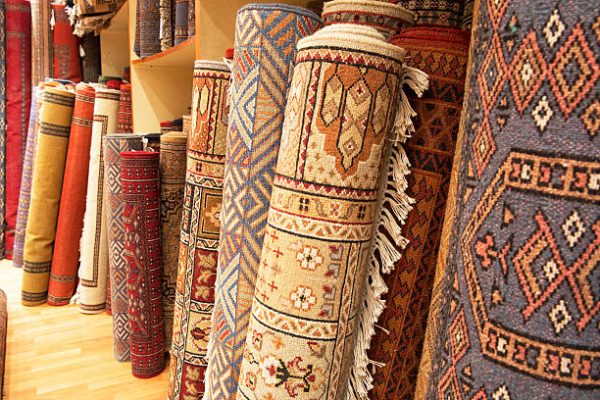Introduction
Project Report For Carpet Industry is as Follows.
The carpet industry is a business that manufactures and distributes carpets and associated items. Carpets are textile floor coverings that are often used in homes, businesses, and industries. The industry includes several stages of manufacturing, such as carpet design, weaving or tufting, finishing, and marketing.
The carpet business is critical to the world economy. It employs a vast number of individuals, ranging from expert artisans to manufacturing employees and sales representatives. Many nations have created specialised carpet manufacturing zones that significantly contribute to their economy. Carpets are not only aesthetic, but also functional.
They reduce energy usage by providing warmth, comfort, and insulation to interior environments. Carpets also absorb sound, improving the acoustic qualities of spaces. They also serve as a cushioning substance, lowering the likelihood of injury from slips and falls.
The carpet business provides a vast selection of carpet alternatives to accommodate a wide range of client preferences. Natural fibres like as wool or silk can be used to make carpets, as can synthetic materials such as nylon, polyester, or polypropylene. Manufacturers provide a wide range of designs, patterns, and colours to meet a variety of interior design aesthetics and practical requirements.

Process Of Carpet industry
Design: The design process for the carpet begins with the creation of patterns and the selection of colour palettes. Designers may develop sophisticated designs using computer-aided design (CAD) software.
Yarn Manufacturing: Yarn is an important component of carpets. Natural fibres such as wool or synthetic materials such as nylon or polyester can be used to make it. Yarn is made by spinning together fibres and twisting them to generate strength and durability.
Weaving or Tufting: Weaving is the process of interlacing yarn on a loom to create a woven carpet. Tufting is the process of creating loops or chopped piles with a tufting machine. Threading the yarn through a backing material and securing it using glue or sewing.
Finishing: After the carpet is woven or tufted, it goes through many finishing operations. Shearing, in which the surface is cut to provide an equal pile height, and backing application, in which a supplementary backing is placed for stability, are two examples.
Dyeing and Printing: At this step, the carpet is dyed or printed to add colours, patterns, or designs. Dyeing requires soaking the carpet in a dye bath, whereas printing transfers colours into the carpet surface using processes such as screen printing or digital printing.
Quality Control: Throughout the production process, quality control inspections are undertaken to guarantee that the carpets fulfil the specified requirements. Inspecting for flaws, measuring pile height, confirming colour correctness, and testing for durability are all part of the process.
Packaging and delivery: After passing quality inspection, the carpets are packed and ready for delivery. They are usually rolled or folded, packed, and transported to retailers, distributors, or clients directly.
Market Potential Of Carpet industry
At a predicted CAGR of 5.00% from 2022 to 2029, the global market for carpets and rugs, which had a value of USD 172.47 million in 2021, will increase to USD 116.73 million by 2029.
The carpet business has a long history, with traditional carpet weaving techniques used in many areas of the world. However, the sector has grown tremendously as a result of technical improvements. To accommodate the expanding demand for carpets in various designs, sizes, and materials, modern carpet production employs complex technology and techniques.
The global market has been pushed by low prices, quick delivery, and excellent quality. In the highly competitive carpet business, technological intervention supported by sustainability will be the critical driver of development potential.
Nylon, polyester, cotton, jute, polypropylene, and other raw materials are commonly used to make them. In the past, commercial-sector carpets were the primary application for previous rugs. Rugs are becoming increasingly popular in residential locations as well. In recent years, the carpet business has seen a significant transformation:
It is no longer acceptable for carpets to be made of anything but the best materials. Improved carpet performance has come from adopting new technologies and innovations, which have helped maintain the carpet business on the cutting edge of design.
For example, the development of stain-resistant nylon thanks to cationic technology has boosted the demand for carpets. As an additional benefit, 100% solution-dyed PET fabric helps reduce shedding and stands up to footwear over time.
It is also worth noting that the development of 6 nylon fiber materials has resulted in more substantial, sturdier carpets and more resistant to dirt and filth. Carpet manufacturers have gained an advantage by working with Magic Fresh, a technology that helps eliminate typical household scents. Consequently, the carpet industry is predicted to rise as a consequence of advancements in the carpet fiber.
Project Report Sample On Carpet Industry
Need Help?
Create 100% Bankable Project Report

